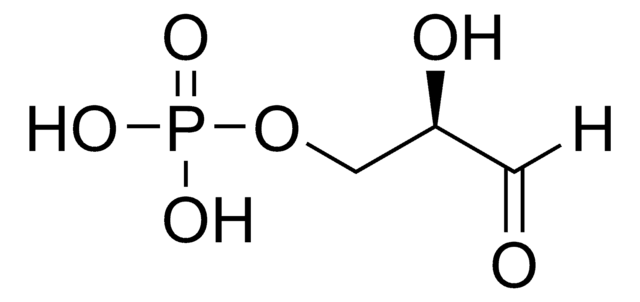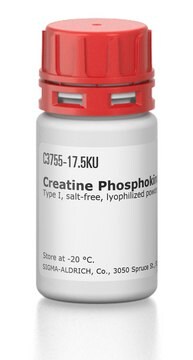G5537
Glyceraldehyde-3-phosphate Dehydrogenase from baker′s yeast (S. cerevisiae)
lyophilized powder, 70-140 units/mg protein
Synonyme(s) :
D-Glyceraldehyde 3-phosphate:NAD+ oxidoreductase (phosphorylating), GAPDH
About This Item
Produits recommandés
Forme
lyophilized powder
Niveau de qualité
Activité spécifique
70-140 units/mg protein
Composition
Protein, 30-70% biuret
Activité étrangère
3-Phosphoglyceric phosphokinase ≤0.05%
Température de stockage
−20°C
Actions biochimiques/physiologiques
Définition de l'unité
Forme physique
Inhibiteur
Code de la classe de stockage
13 - Non Combustible Solids
Classe de danger pour l'eau (WGK)
WGK 3
Point d'éclair (°F)
Not applicable
Point d'éclair (°C)
Not applicable
Équipement de protection individuelle
Eyeshields, Gloves, type N95 (US)
Faites votre choix parmi les versions les plus récentes :
Déjà en possession de ce produit ?
Retrouvez la documentation relative aux produits que vous avez récemment achetés dans la Bibliothèque de documents.
Les clients ont également consulté
Articles
Glucose metabolism is regulated by the opposing actions of insulin and glucagon. Insulin is released from pancreatic ß cells in response to high blood glucose levels and regulates glucose metabolism through its actions on muscle, liver, and adipose tissue.
Notre équipe de scientifiques dispose d'une expérience dans tous les secteurs de la recherche, notamment en sciences de la vie, science des matériaux, synthèse chimique, chromatographie, analyse et dans de nombreux autres domaines..
Contacter notre Service technique










